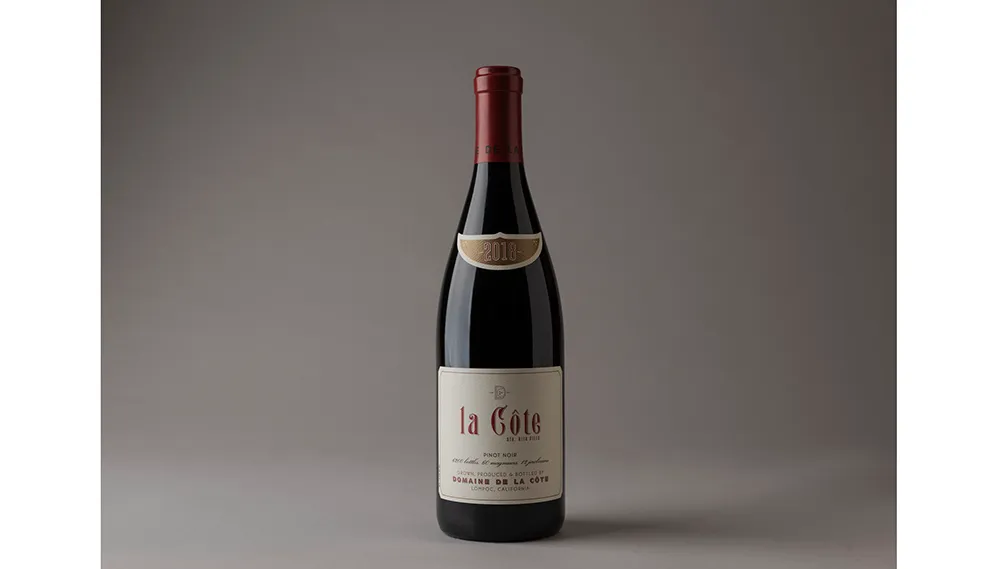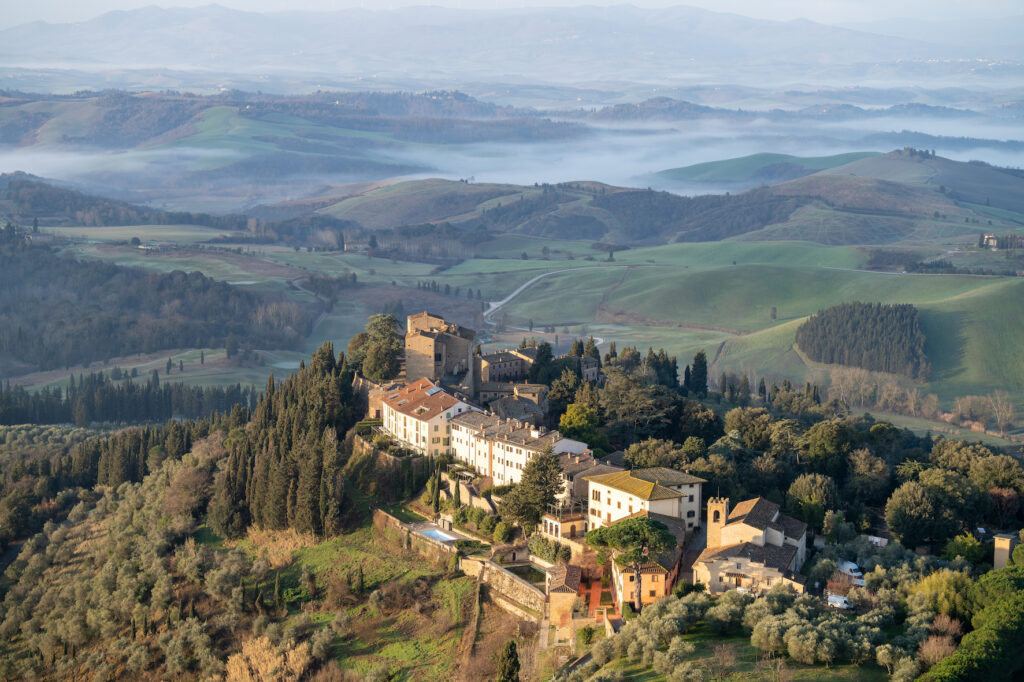Lewis Chester DipWSET meets the man behind Domaine de la Côte, Sandhi Wines, Phelan Farm and Evening Land.
Anyone who watched the SOMM movies, a series of acclaimed wine documentaries, will know Rajat Parr. He appeared in all three movies, and had a leading role in the third, mentoring and teaching candidates to pass the incredibly tough Master Sommelier examinations. A likeable, friendly, extremely knowledgeable and gifted man, Rajat’s place in the American wine industry reminds me of how deeply loved and respected Gerard Basset OBE MW MS was in the hearts of the British and French wine trade before his passing five years’ ago. You cannot but warm to Rajat Parr.
I first met Rajat in 2011 when he was a part owner and Head Wine Buyer for the Burgundy-focused restaurant RN74 in San Francisco. Rajat personally suggested the wines for my friend and I to drink that night, and we asked him to sign copies of his highly successful book, Secrets of the Sommelier, which is now in its fifteenth print run. We immediately bonded, and kept in touch over the years. As an educator and mentor, we chose Rajat to become one of the five judges for the Taylor’s Port Golden Vines Diversity Scholarship, which funds students from a diversity background looking to complete the Master Sommelier or Master of Wine examinations.
Kolkata to New York
The pathway to success for Rajat was certainly one less travelled. Hailing from Kolkata, India, he attended a French-British Catholic school—which perhaps explains his Anglophile and Francophile tendencies—before moving on to La Martinère, a Sheraton-run hotel management college in Manipal in Southern India. Spreading his wings, he decided to move to the USA, attending the Culinary Institute of America in Hyde Park, New York.

The Wine Guy
Rajat’s first career was as a restaurateur. Either as an employee or part-owner, having moved to San Francisco he worked at Rubicon, Fifth Floor, RN74 and Michael Mina, known for its huge wine list that has won many awards. Having started in 1996 as a lowly back waiter, it was at Rubicon that Rajat had his wine epiphany: a bottle of 1986 Raveneau Les Clos that blew his socks off. Without any formal wine education, Rajat became the ‘wine guy’, tasting and buying wines for the various restaurants, and travelling to France and Italy to learn more about his newfound passion. Burgundy, in particular, took hold of him, and over the years, I have regularly bumped into him wandering the streets of Beaune.
The Writer
Rajat’s second career was to become a wine writer, not just with Secrets of the Sommelier, but also his well-regarded The Sommelier’s Atlas of Taste, which was awarded an André Simon Award to go alongside the James Beard Award he won for Secrets. As part of a broader trend recognising and appreciating the knowledge, skills and charisma of sommeliers such as André Mack, Laura Maniec and Bobby Stuckey, as well as films such as SOMMand television shows like Sommelier Challenge, Rajat’s books have clearly contributed to the star status, public adoration and fascination that top sommeliers attract in America today.
The Winemaker
A third career was soon to arrive: Rajat the winemaker. He had worked a harvest at the Calera winery in California to learn more about winemaking, and in 2004, he made his first wine in Santa Barbara County under the Rajat Parr Selection label. The late Jim Clendenen, with whom he worked on three vintages at Au Bon Climat, had a lasting influence on Rajat. Burgundy’s Jean-Marc Roulot—a regular tasting partner—also contributed to shaping Rajat the winemaker. Experimenting with winemaking and taking advice from his mentors, “I came to realise that I needed more control on the viticulture and vinification,” he explains, “which led to me working with Sashi Moorman in 2007 where we planted Domaine de la Côte, and then Sandhi Wines in 2009.”

Bimarian Films
Either as owner or part-owner, alongside his now long-time business partner Sashi Moorman, Rajat is a prolific producer of artisanal wines in California, embracing the Burgundian culture for Pinot Noir and Chardonnay, as well as fairly obscure varietals that he believes better suit some of his terroir. It’s baffling to me how Rajat has accomplished so much in such little time.
Domaine de la Côte has garnered a high reputation for producing top end Pinot Noir, and also produces a small amount of Chardonnay. Sandhi Wines produces both negociant wines—using non-estate farmed grapes—as well as grapes from its own vineyards, selling at a lower price point than Domaine de la Côte. There is also Evening Land in Oregon, where Rajat is a part owner. But it is Phelan Farm in Cambria where Rajat spends most of his time today, an hour’s drive from Domaine de la Côte and Sandhi Wines.
“I’m able to divide my time effectively between the estates as they are fairly proximate to each other,” Rajat tells me. “I’m involved in all the harvests, as different terroirs ripen the grapes at different times. Harvest in Oregon is always different to California, so there’s never any crossover issues to contend with.”

Lindsey Ross
“My Art Studio”
Phelan Farm is Rajat’s pet project. Located in Cambria close to the William Randolph Hearst Castle, which brings in a steady stream of visitors to the winery, there are forests, chickens, dogs, a holistic-Ayurvedic approach to vineyard management—no ploughing or hedging—and enough microflora to now apply for organic farming certification. There’s a new kitchen on site, and Rajat’s plan is to bring in a chef to create wine dinners and events. The tasting room has become an important part of the business model, allowing him to sell wines at the cellar door.
“Phelan Farm is like my art studio,” Rajat explains. “I’m constantly experimenting with new varietals and new cuvées. Similar to the Burgundian model, we currently make 15 different cuvées, but I expect to see so many more in the future.” Indeed, there’s a smorgasbord of European varietals that are planted on his 4.5 hectare estate, which was recently expanded by an additional nine hectares with land just beyond the creek opposite the estate. These include Mencía from Galicia in Spain; Gamay from Beaujolais in France; Altesse, Gringet, Jacquere and Mondeuse from Savoie in France; Poulsard, Savagnin and Trousseau from the Jura mountains in France.
“Not all of these varietals will work,” he says, “but by experimenting on my terroir, I will find some combinations that will do extremely well and might not have been planted in the region before. I’m willing to take the risk.” Indeed, Rajat might be onto something, as I tasted many of these cuvées and they were uniformly interesting, well-made and excellent to drink. What sets them apart—along with Rajat’s other wines—are that they are surprisingly light, elegant, fresh and vibrant, avoiding the high alcohol fruit bombs that many European wine lovers deem to be the enduring characteristic of Californian wines.

Erik Castro
The New California Wine
It is perhaps unsurprising, therefore, that Jon Bonné’s excellent book The New California Wine, which explores the modern transformation of California’s wine industry, identifies Rajat as a significant figure in the state’s evolving wine scene. Rajat’s focus is on the exploration of terroir-driven, minimalist winemaking practices, along with featuring smaller artisanal production. He prioritises quality and authenticity, while championing lesser-known grape varieties. In this regard, Rajat has contributed to the shift towards a more diverse and dynamic California wine landscape.
Having won three James Beard Awards (including a Hall of Fame Award), multiple Wine Spectator Grand Awards and an André Simon Award, what does the future hold for a man who has already become legendary in the eyes of many of his peers? “My first priority is to convert my vineyards to organic farming and to continue to change perceptions of Californian wine, not just in the USA but around the world,” Rajat tells me. “I’m also working on a new, exciting charity programme that includes vineyard and cellar management internships for students from India to come to Cambria.”
The Best Three Wines Rajat Believes He Has Made

2018 La Côte, Pinot Noir, Sta Rita Hills, Domaine de la Côte
Explaining this selection, for Rajat, 2018 was a special vintage. “A unique growing season with perfect density and a wine that can age for up to ten or twenty years,” he says. At 13.5 percent ABV, the wine is Volnay-esque in style, light and pale with gorgeous red fruit and silky, soft tannins and a perfume of red cherries and liquorice without the usual gamey notes I would have expected from a Californian Pinot. Wine Advocate loved it, giving it 96+ points. Only 500 cases were produced and it cost $90 (£70) on release.
2022 Autrement, Phelan Farm, Wines of the Pacific
A blend of 40 percent Gamay Noir, 30 percent Mondeuse and 30 percent Pinot Noir from San Luis Obispo County, with just 12.5% ABV, Rajat chose this wine for its sweeter fruit and spicy notes while maintaining great density on the mid-palate. My personal favourite of the three wines Rajat selected due to its unique character and alluring aroma, it was inspired by a wine made by Jacques Maillet called Autrement from the Savoie in France that he drank regularly on trips to Paris.
He chose to plant Mondeuse on a part of his vineyard with rolling hills just as he had seen in Savoie, asking permission from the Curtet family to use the Autrement name on the label. Mondeuse is a late picking variety harvested in October or early November before the rains. “I love the weightlessness contrasted with richness in the palate, while the wine has an incredible freshness and vibrancy,” he says. Autrement is from the forest canyon which might explain the herbal, sweet cherry and peppery notes. The canyon is a cool place with very few days above 30 degrees centigrade during the growing season, especially in the summer months. “You get the sweetness from the Pinot, sour notes from the Gamay and spicy notes from the Mondeuse.” In total, 8,700 bottles were produced scoring 95 points with Wine Advocate. The wine was released at $45 (£35) per bottle.
2020 Romance, Chardonnay, Sandhi Wines
Coming in at a lowly 12.8 percent ABV and topped with green wax on the cork, this small cuvée made from younger Chardonnay vines is grown on clay soils in a windy spot. Yields are low (20 hectolitres per hectare) on a 1.2 hectare parcel. The wine has a classic flinty, lemon curd, refreshing lime zest while the mid-palate has a creamy texture. “I chose this wine as it was my first vintage and when tasted blind, it was a ringer for a good quality Burgundy white,” Rajat explains. “The vineyard is right below the Momorious vineyard in Santa Rita Hills where we harvest grapes for Domaine de la Côte.” Only 100 cases were produced and it retailed for $95 (£75) per bottle on release.
Rajat’s Desert Island Choices
Book: One Straw Revolution by Masanobu Fukoka
Film: The Big Lebowski (1998)
Band / Musician: U2
Luxury: A cold bunker
Activity: Swim, fish and grill
Rajat on Rajat
How he describes himself: Humble, honest and always ready for a party.
Craziest thing he has ever done: Moved across the country for an interview for my first job in 1996.
Craziest thing he wants to do: Travel around the world in one direction.
Best Three Wines he has ever tasted: 1942 JL Chave Hermitage; 1962 Domaine de la Romanée-Conti La Tâche; 1999 Pierre Overnoy Arbois-Pupillin Poulsard
Death Row Wine: 1978 Auguste Clape Cornas
Lewis Chester DipWSET is a London-based wine collector, member of the Académie du Champagne and Chevaliers du Tastevin, co-founder of Liquid Icons and, along with Sasha Lushnikov, co-founder of the Golden Vines® Awards. He is also Honorary President and Head of Fundraising at the Gérard Basset Foundation, which funds diversity & inclusivity education programmes globally in the wine, spirits & hospitality sectors.








